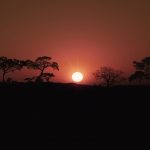Sensors | Old Cameras
In principle, what is the role of the sensor in the camera? To understand this and more, let's go to the article.
The old analog cameras needed a limited roll of film, also called film, which was the part that stored the formation of the image after the light enters the lens.
Through a revealing emulsion bath, the image could be read even though, in a lengthy process with no margin for errors, since the recording in the film could not be revised or altered until the moment of its development.
Sensors | Contemporary Cameras
However, their digital contemporaries already use a sensor (CCD or CMOS) in place of these films, which is the party responsible for registering the formation of the image.
CMOS technology
Gradually, the CMOS technology replaced the CCD sensor, capable of storing more data in smaller areas, with less chance of heating, reduced energy consumption, and still, a great improvement in the noise index of the images.
Although the principle of capturing scenes has not changed, its evolution in terms of agility and the possibility of visual experiences is indisputable.
In addition to a greater and more varied experimentation, it is also very important to highlight the lower operating cost, since one removes an unwanted image easily, without generating any type of waste or waste of materials.
[…] This sensor converts light into electrical signals whose charge varies according to the intensity of the light. The sensor is formed by pixels, forming an array of rows and columns. In a simpler comparison, each pixel can be compared to a grain of silver salts from the traditional film. Once the scene is recorded by the sensor, the data is sent to the camera's memory and then to the memory card (RAMALHO, 2004 a, p.3).
Digital Camera X Old Film
It can be said that the sensor of the digital camera is comparable to the old film that recorded the images. Since the role of the sensor is to absorb the light that enters the camera, the larger the absorption space of this sensor, the better the images resulting in this process.
So, note that the size of the sensor determines the effective focal length in the lenses used in the camera.
35 mm
In general, larger sensors produce better quality images because the pixels are larger, produce less noise and are not so clustered. However, larger sensors are more expensive to produce,
therefore, cameras are also more expensive. A camera with a larger sensor also has a larger, brighter viewfinder. If everything else is the same, larger sensors give a shallower depth of field compared to smaller ones. Full-frame sensors are found in professional and semi-professional models and have the same function as a 35 mm film frame. This size allows for extremely high resolutions.
Therefore, sharper images with a greater volume of colors and captured in their entirety is what is expected from a sensor for DSLR cameras compared to compact cameras and smartphones.
DSLR: (Digital Single-Lens Reflex) This term is used to refer to digital cameras with reflective lenses. They allow the exchange of lenses and have larger sensors than compact cameras and smartphones. They are divided into two categories, being the APS-C sensor (cropped) and the full frame. The latter are equipped with the largest sensors in the DSLR category.
Smaller Sensors X Lower Quality Images
Thus, the reverse is also true. Smaller sensors tend to result in lower quality images containing a greater possibility of graininess, low sharpness and lower law in the color range. This is because smaller sensors are capable of storing fewer pixels.
The resolution of the images on the camera is expressed in number of pixels and the sensor is the part responsible for storing this data, which occupies space on the plate. The larger the sensor, the greater its capacity to store these points and, thus, give higher quality to the resolution of an image.
Therefore, when purchasing a device, do not worry only with the resolution of the images produced by it measured in pixels, but with the real capacity of your sensor, which is the heart in the process of forming a digital image.
It is like comparing a full HD flat screen television to an older TV model with an image tube. The quality of the image produced by each equipment is distinctly different in relation to noise, color vibration and image definition.
Pixels are responsible for the formation of the image. To store more pixels, the sensor needs more physical space. The more pixels the heavier the file and the greater the amount of information contained in the image.
Sensor Sizes | Role of the Sensor in the Camera
The image below shows the different sensor sizes for professional, semi-professional, compact (or amateur) digital cameras and smartphones. Note that cameras with a full frame sensor have a size equivalent to an old 35 mm film for development, so their higher quality in recording and image formation.
Thus, according to the physical size of each sensor, different results can be expected during image capture. Contrary to what is sold in the consumer market, it is not enough that the camera has a large number of pixels in its resolution. It is necessary to evaluate the set adding to this important given the type and size of sensor of your equipment.

The area of coverage of the capture of the subject (popularly called crop) is also linked to the size of the sensor.

Therefore, the image registration area, from the same reference point, is always larger for the Full-frame sensor in relation to the “cropped” sensor.
Having a full frame camera that has a high quality sensor does not mean producing good pictures. A good photograph happens from a sum of factors that, combined, result or not in what you expect and need. So, answer yourself: is it possible to start training with a compact camera and go through an APS-C (crop) sensor DSLR until you get to a ful frame camera, with a higher cost? What is your photographic need?
Personal Consideration
In the next article, in the same way, I will bring the types of compression and file formats.
Anyway, we will meet in the next article on photographic technique.
So, did you like the article and want to contribute a coffee of thanks? Make your contribution through the QR Code below. Help the Foto Blog that helps you. Any value is welcome! A coffee is R$2 here, for example.

Related articles
| Make long exposure | Types of cameras | Light the principle (part 1) | Light the principle (part 2) |
| Photographer | Saquarema | Photo | Photography | Online Gallery | FotoBlog | Claude Monet | Photographic Technique | Color Photographic Technique





